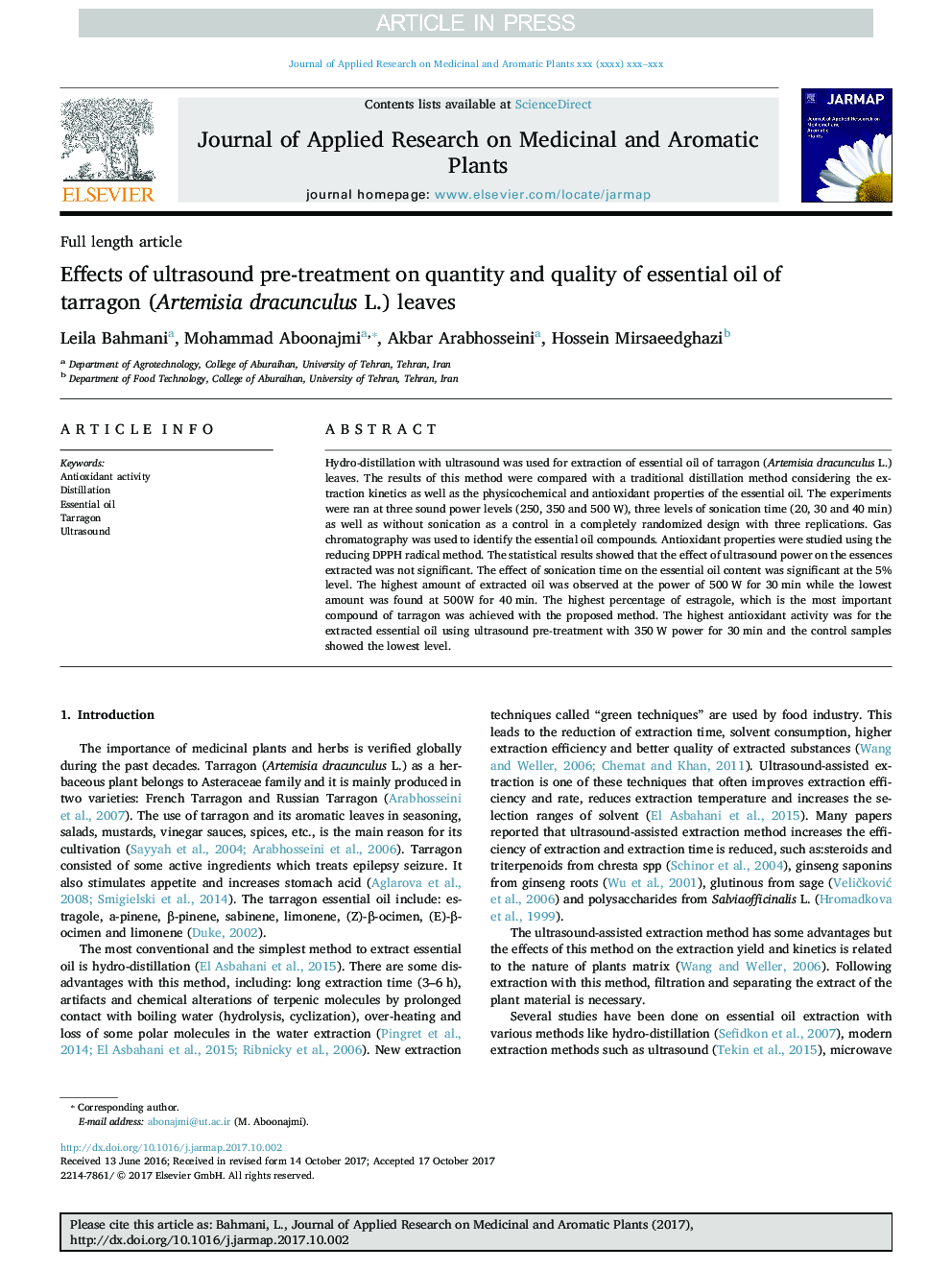| Article ID | Journal | Published Year | Pages | File Type |
|---|---|---|---|---|
| 8692693 | Journal of Applied Research on Medicinal and Aromatic Plants | 2018 | 6 Pages |
Abstract
Hydro-distillation with ultrasound was used for extraction of essential oil of tarragon (Artemisia dracunculus L.) leaves. The results of this method were compared with a traditional distillation method considering the extraction kinetics as well as the physicochemical and antioxidant properties of the essential oil. The experiments were ran at three sound power levels (250, 350 and 500â¯W), three levels of sonication time (20, 30 and 40â¯min) as well as without sonication as a control in a completely randomized design with three replications. Gas chromatography was used to identify the essential oil compounds. Antioxidant properties were studied using the reducing DPPH radical method. The statistical results showed that the effect of ultrasound power on the essences extracted was not significant. The effect of sonication time on the essential oil content was significant at the 5% level. The highest amount of extracted oil was observed at the power of 500â¯W for 30â¯min while the lowest amount was found at 500W for 40â¯min. The highest percentage of estragole, which is the most important compound of tarragon was achieved with the proposed method. The highest antioxidant activity was for the extracted essential oil using ultrasound pre-treatment with 350â¯W power for 30â¯min and the control samples showed the lowest level.
Related Topics
Life Sciences
Agricultural and Biological Sciences
Agricultural and Biological Sciences (General)
Authors
Leila Bahmani, Mohammad Aboonajmi, Akbar Arabhosseini, Hossein Mirsaeedghazi,
